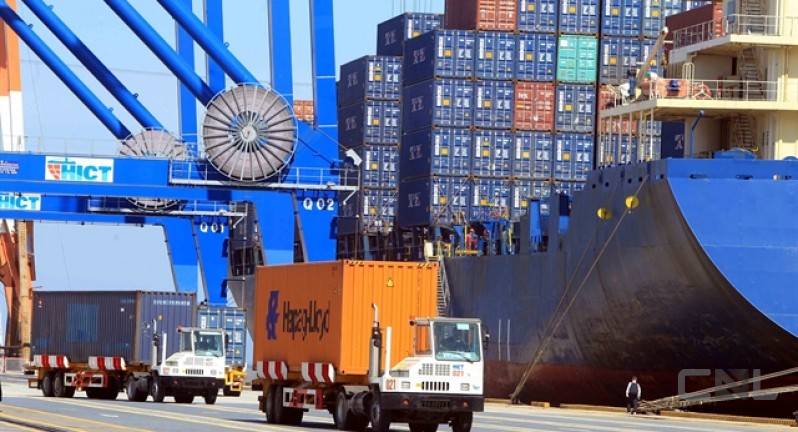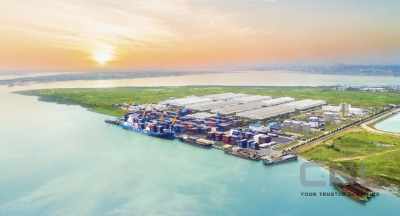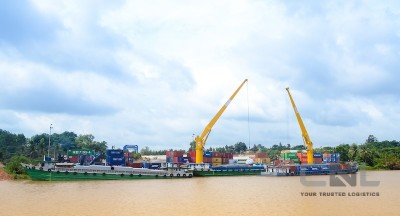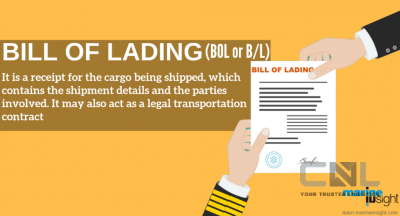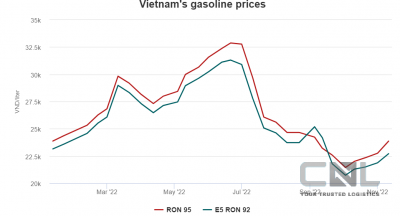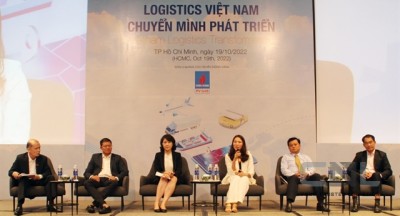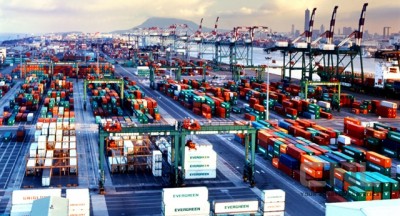CMSC recommended that VIMC divest capital in seaport enterprises, but only to a 65 per cent ownership rate.

Trucks carrying containers at Hải Phòng port. VNA/VNS Photo
HÀ NỘI — Vietnam National Shipping Lines (VMIC) has completed the corporation's restructuring scheme draft for 2021–2025 and sent it to the related ministries and agencies for comments. VIMC proposes reducing the parent company's state ownership rate from 99.4 per cent to 65 per cent.However, the Committee for the Management of State Capital (CMSC) at Enterprises, a representative of state capital at VIMC, said that seaports are an important component of the maritime industry, a strategic breakthrough in infrastructure.
VIMC proposes reducing the parent company's capital ownership ratio in member enterprises operating seaports.
Specifically, VIMC suggested reducing the capital ownership of the parent company in five ports to 51 per cent. These ports are Cần Thơ Port (with 99 per cent of the capital), Cam Ranh Port (nearly 81 per cent), Quy Nhơn Port (75 per cent), Đà Nẵng port (75 per cent), Cái Lân port (56 per cent).
For Hải Phòng port, VIMC proposes to reduce the equity ratio from 92.5 per cent to 65 per cent and divest all capital in Việt Nam Hi-tech Transportation Company Limited, where VIMC is currently holding 56 per cent of the capital.
CMSC said that VIMC's member businesses are holding large, important seaports and doing business effectively. In 2021, the profit before tax of port businesses was nearly VNĐ2.6 trillion (US$104.6 million), accounting for 71 per cent of VIMC's consolidated profit, which was mainly from Sài Gòn, Quy Nhơn, Hải Phòng, and Đà Nẵng Port.
CMSC recommended that VIMC divest capital in seaport enterprises, but only to a 65 per cent ownership rate.
As for VIMC's member businesses in shipping, maritime services, and logistics industries, VIMC proposes to divest all capital the company holds in most of these companies, including Oriental Shipping and Trading JSC, Vietnam Sea Transport and Chartering JSC, and Đông Đô Marine JSC.
In the case of Vinaship and VIMC Logistics, VIMC proposed divesting a portion of each company, keeping only 36 per cent of the shares in each.
CMSC agreed with VIMC's proposal on the divestment of member enterprises in the fields of shipping, maritime services, and logistics.
For shipping enterprises, this Committee said that the units mainly operate bulk carriers with a long service life (over 20 years on average), so operating costs are high, and some businesses suffer long-term losses. — VNS
vietnamnews.vn
